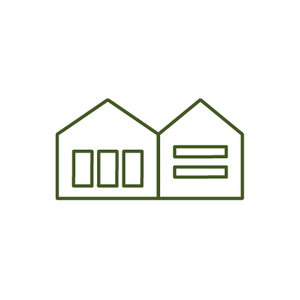Other examples
STADS is up and running
STADS is once again up and running, and you can register for spring classes and exams. The registration deadline is Thursday 7 November at 23.59.
Green Guide for staff and students

Udfordring
Aarhus Universitet ønsker at reducere universitetets CO2-udledning i 2025 med 35% sammenlignet med 2018.
Løsning
AU's Grønne Guide er udviklet for at give medarbejdere og studerende på AU inspiration til, hvordan de gennem deres hverdag på campus kan bidrage til et grønnere universitet.
Guiden er inddelt i fem emner; Transport, På kontoret, Møder og Konferencer, Mad og drikke samt Grønne netværk.
Yderligere oplysninger
Sustainability and conferences
Recent years have seen a growing focus on sustainability, recycling and ecology. At AU we also focus on sustainability when we organise and hold conferences and events.
We focus on sustainability in this area conferences and events because we want to take responsibility for the society that we are a part of, and because it is the sensible thing to do. But in fact, we have also discovered found that in many cases we can save resources – and thus save on costs – by approaching things differently.
Read more about how to make your next conference at AU a sustainable one.
Example of a sustainable conference: The Wetpol Conference, May 2019.
Approx. 200 participants
Host: Department of Bioscience.
The conference organisers wanted to place a high emphasis on holding the conference in a sustainable way. The conference participants expressed support for this approach, which also harmonised with the theme of the conference.
Visit Aarhus, Events and Communication Support (AU) and Wetpol (department head, professor, head of department secretariat), worked together to develop several initiatives:
- Focus on transportation in Aarhus, including walking busses and the light rail
- Minimising printed materials
- Focus on healthy, locally produced organic food – and avoiding food waste
A video was produced about the sustainable concept for the conference in collaboration with VisitAarhus (http://wetpol.com/). The organisers at AU used this concept to actively promote the sustainability of the conference.
Three initiatives to improve the academic environment at the Nobel Park: The library, the campus and the deli
Challenge
A 2014 user survey showed that user satisfaction with the area was low. Users expressed a desire for:
- Better utilisation of the area and an attractive environment for study.
- Green oases and outdoor seating.
- A cafeteria that stays open after teaching hours.
Solution
Library: Renovation of the space and the creation of an attractive environment for study.
On the background of a desire to implement improvements on a limited budget, a circular and sustainable approach was taken. The focus was on the financial aspect, social activities and a healthy indoor environment. The uninspiring windowless basement rooms were improved by the addition of noise reduction, fresh air and light that is perceived like daylight.
Reusing bookshelves creates space in the budget for improvements. This savings, in addition to a small construction budget, were invested in improving the indoor climate, noise reduction of the ventilation system, LED daylight lightbulbs and living green walls. The new Arts library is a great success, with an improved APV and more users at all times. This study environment invites students to stay longer and gives them more energy to participate in communities.
The Nobel campus area: Social, environmental and financial project.
The area lacked a campus-like environment with green outdoor seating areas. The solution was to place a large, organically shaped bench in the busiest traffic node in the area where students and passersby can eat their lunch outside in the sun. This seating has altered the hierarchy in favour of pedestrians, who feel that it is an improvement – while also providing more space and improving visibility for cars. The financially sustainable aspect consisted in the fact that the bench and planters were simply added to the existing road construction, which was not altered.
Café/deli: Extended opening hours.
A café/deli that supplements the cafeteria was established that is also open in the afternoon and evening. The deli also offers various kinds of takeout and bread people can take home for dinner.
Additional information
If you have any questions, please contact the architect, Gustaf Lohm gl@au.dk